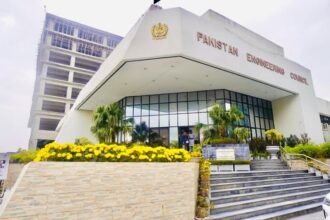Prof. Dr. Ijaz Rasool Noorka
Executive Summary
Pakistan is facing a critical paradigm shift in wheat production due to changes in farmers’ perceptions. This year is particularly crucial, and there is growing concern that wheat production will fall short of the established targets. Last year, wheat production reached historical levels, exceeding 30 million metric tons, and agricultural growth surpassed expectations. Despite good crop health, a significant amount of wheat stock was imported, and the minimum support price of Rs 3900 fell by up to 40%. Additionally, media coverage discouraged farmers from planting more wheat, and a 10% reduction in wheat production could result in a $1 billion loss.
A critical question remains: how can wheat production be enhanced? Now is the time to update the existing wheat policy with a collaborative approach, as food security is a key factor positively correlated with agricultural production and poverty reduction. In certain sectors, government intervention is necessary to provide quality seeds, credit facilities, and minimize the role of intermediaries by liberalizing the market.
Key Policy Recommendations
Pakistan’s wheat production policy must address the pressing issues of food security, rising demand, and the impacts of climate change. The overall policy framework should include the following components:
– Massive Wheat Campaign 2024:
A widespread wheat sowing campaign, similar to previous years, will boost farmer confidence and counter negative social media influences.
– Subsidies and Support Pricing:
The government must set minimum support prices (MSP) to ensure wheat growers receive a fair price for their production. Wheat price subsidies can help protect farmers and consumers from market fluctuations. While low wheat prices benefit consumers, they disturb farmers’ financial stability, especially due to high production costs. In 2024, the MSP should reflect rising production expenses, such as fertilizer and labor costs.
– Availability of Certified Seeds:
Research institutes across Pakistan are working to develop disease-resistant and high-yielding wheat varieties. There is a need for better access to certified seeds, along with dedicated extension services to encourage their use and increase yields under current climatic stress.
– Efficient Water Management & Irrigation:
The major wheat-growing regions rely on canal irrigation, making efficient water resource management a key responsibility for the government. Incentive programs should be introduced to encourage modern irrigation techniques and efficient irrigation scheduling.
– Availability of Climate-Resilient Wheat Varieties:
The government must prioritize managing the impacts of climate change, such as irregular rainfall and rising temperatures, which can reduce wheat yields. Climate-smart agricultural practices, such as growing water- and heat-resistant cultivars and promoting early wheat sowing, should be encouraged.
– Fertilizer and Input Supplies:
The government must ensure the timely and adequate supply of fertilizers and other inputs at subsidized prices to promote balanced fertilizer usage.
– Soil Health Improvement:
Policies should encourage organic farming practices and reduce reliance on chemical fertilizers to improve soil health.
– Storage and Supply Chain Management:
Efforts must be made to improve storage facilities to prevent post-harvest losses and ensure efficient supply chains, ensuring wheat reaches markets and flour mills on time.
– Market Access and Export Promotion:
Steps should be taken to streamline the export of surplus wheat after fulfilling domestic needs, allowing farmers to access international markets.
– Precision Farming:
Agricultural technologies, such as precision farming tools and mobile-based consulting services, can help farmers adopt best practices at optimal times.
– Weather Updates:
Farmers should receive timely, location-specific weather updates to help mitigate environmental challenges.
Conclusion
The government must continue to lead efforts to ensure wheat production, considering both global market dynamics and domestic challenges such as inflation, poverty, water scarcity, and food security concerns. This policy framework can address the interconnected issues of climate change and food insecurity. The government’s role in amending the existing wheat policy, supporting research adaptation, and facilitating farmer transitions to a more liberalized market is crucial to enhancing wheat production.
The Author is Chairman, Department of Plant Breeding and Genetics, University of Sargodha, Pakistan










